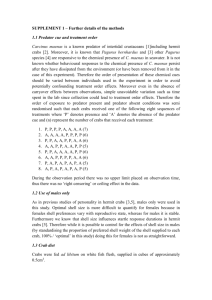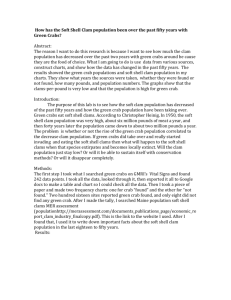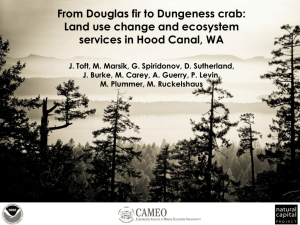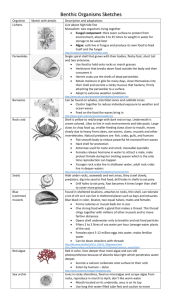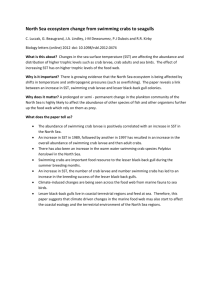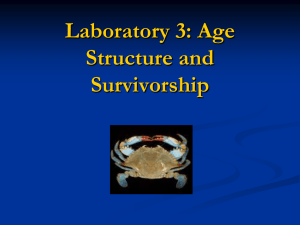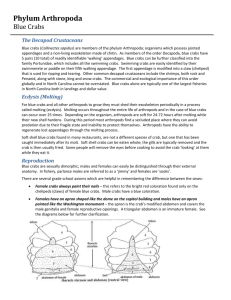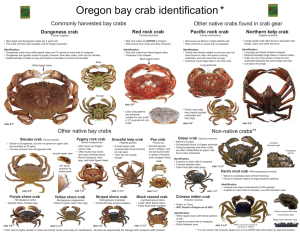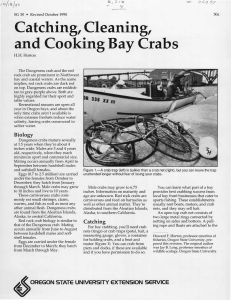The Dungeness crab Background The Dungeness crab
advertisement
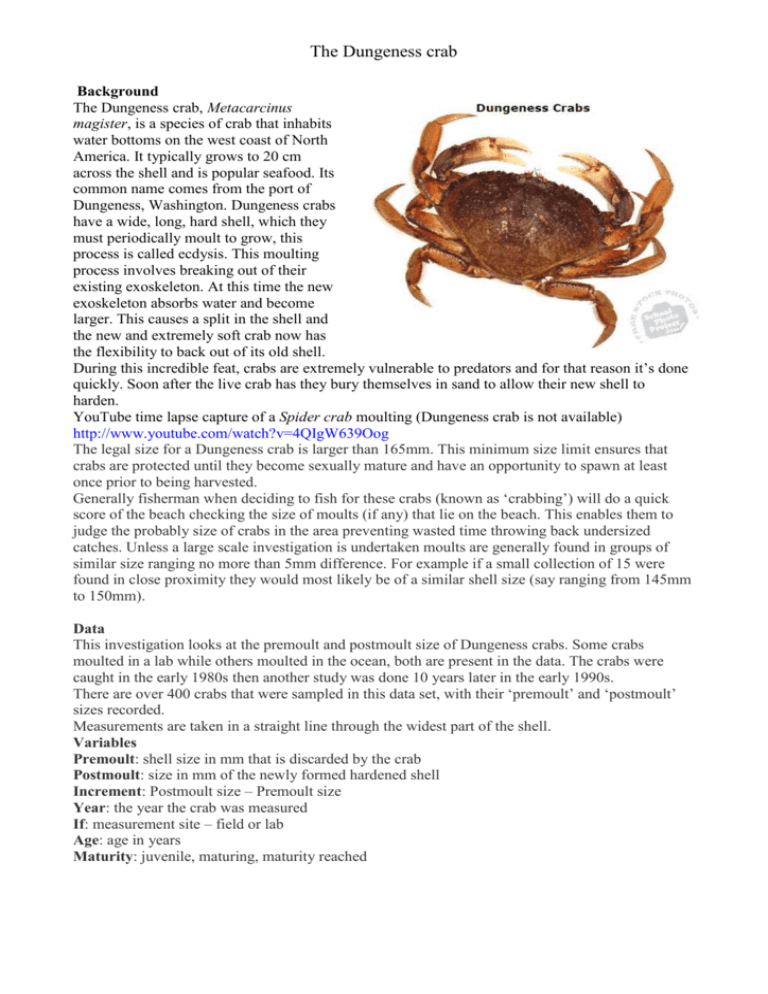
The Dungeness crab Background The Dungeness crab, Metacarcinus magister, is a species of crab that inhabits water bottoms on the west coast of North America. It typically grows to 20 cm across the shell and is popular seafood. Its common name comes from the port of Dungeness, Washington. Dungeness crabs have a wide, long, hard shell, which they must periodically moult to grow, this process is called ecdysis. This moulting process involves breaking out of their existing exoskeleton. At this time the new exoskeleton absorbs water and become larger. This causes a split in the shell and the new and extremely soft crab now has the flexibility to back out of its old shell. During this incredible feat, crabs are extremely vulnerable to predators and for that reason it’s done quickly. Soon after the live crab has they bury themselves in sand to allow their new shell to harden. YouTube time lapse capture of a Spider crab moulting (Dungeness crab is not available) http://www.youtube.com/watch?v=4QIgW639Oog The legal size for a Dungeness crab is larger than 165mm. This minimum size limit ensures that crabs are protected until they become sexually mature and have an opportunity to spawn at least once prior to being harvested. Generally fisherman when deciding to fish for these crabs (known as ‘crabbing’) will do a quick score of the beach checking the size of moults (if any) that lie on the beach. This enables them to judge the probably size of crabs in the area preventing wasted time throwing back undersized catches. Unless a large scale investigation is undertaken moults are generally found in groups of similar size ranging no more than 5mm difference. For example if a small collection of 15 were found in close proximity they would most likely be of a similar shell size (say ranging from 145mm to 150mm). Data This investigation looks at the premoult and postmoult size of Dungeness crabs. Some crabs moulted in a lab while others moulted in the ocean, both are present in the data. The crabs were caught in the early 1980s then another study was done 10 years later in the early 1990s. There are over 400 crabs that were sampled in this data set, with their ‘premoult’ and ‘postmoult’ sizes recorded. Measurements are taken in a straight line through the widest part of the shell. Variables Premoult: shell size in mm that is discarded by the crab Postmoult: size in mm of the newly formed hardened shell Increment: Postmoult size – Premoult size Year: the year the crab was measured If: measurement site – field or lab Age: age in years Maturity: juvenile, maturing, maturity reached



